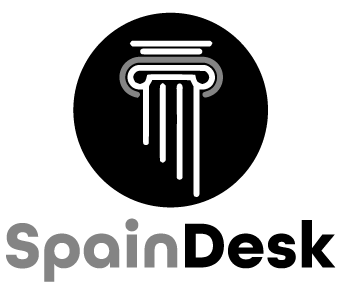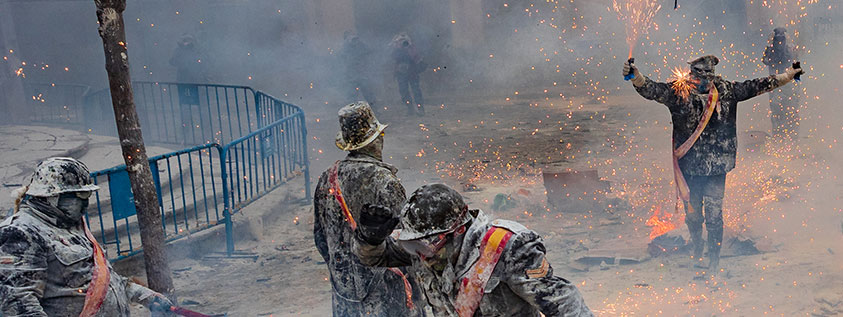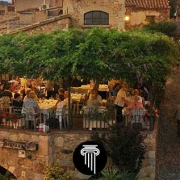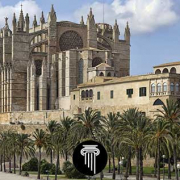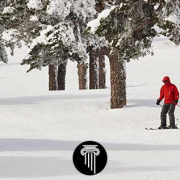Spanish Festivals: A Complete Guide with Video’s
Spanish festivals and celebrations are a great way to explore Spanish culture. Spanish people love to party and celebrate their popular festivals. From religious observances to harvest fairs, there’s a festival for every occasion – and each one is packed with traditional food, music, and dance. Spanish festivals often coincide with Spanish holidays, but they’re also used to commemorate historical events, civic milestones, and pagan traditions. Here’s a list of Spanish festivals that are worth attending:
Content
January
Dia De Los Reyes Magos – Three Kings Day
Dia De Los Reyes Magos is Spanish for Three Kings Day, which is typically celebrated on January 5th. This holiday commemorates the day that three kings travelled to Bethlehem to bring gifts to baby Jesus.
Today Dia De Los Reyes Magos is more often used as an excuse for children to receive presents from their parents or grandparents than it is as an observance of Christianity. Children will wake up on the morning of January 5th and find presents from the Three Kings, or Magos. This used to be the replacement for Christmas, but now Spain celebrates Christmas as well.
- Location: Spain
- Website: –
Tamborrada – San Sebastian Festival
The Spanish city of San Sebastian is known for its annual Tamborrada festival. It includes a parade with marching bands, dancers, and political figures. Tamborrada lasts for approximately 24 hours. Groups of Spanish people march with drums and answer each other’s drums as they go. This creates a huge wall of sound and continues for 24 hours.
The day it is celebrated started in 1597, but the drumming began around the 1830s. It is not exactly clear what the start was, but it is believed that its origin finds itself in Carnaval festivities.
- Location: San Sebastian, Gipuzkoa
- Website: https://www.sansebastianturismoa.eus/en/
Jarramplas – Piornal
The Jarramplas is a frightening figure wearing long coloured ribbons and a large mask with horns. Within the culture, the Jarramplas is regarded as a cattle thief, and the entire Spanish festival is focused on food, harvest, and agriculture. The festivity includes throwing turnips at the Jarramplas, to kill the evil spirit.
Because of a large number of turnips thrown, the taunting by the Jarramplas and the excitement of the crowd, the Jarramplas wears strong protective clothing. After the spirit is killed, the person wearing the costume is embraced by the crowd.
- Location: Piornal, Cáceres
- Website: http://www.piornal.es/fiestas
CutreCon Film Festival
The CutreCon Film Festival in Madrid is a must-visit if enjoy a good nostalgic laugh. CutreCon is short for “Cine Trash,” Spanish for trash cinema. It is Spanish cult films, horror movies, and B-movies. CutreCon is an annual film festival in Europe that focuses on movies so terrible that they’re good, many of which have been resurrected by the web and gained a cult following.
The CutreCon Film Festival is great for people that love Nostalgia for the era of low-quality, VHS films, dissatisfaction with conventional film, and a desire to laugh and release steam has helped to increase the genre’s popularity.
- Location: Madrid
- Website: https://cutrecon.com/
February
Fiestas y hogueras de San Juan
Thousands of people queue up in the streets ready to jump over some 20 bonfires. The Arizkun Carnival Festival is an ancient pagan ceremony that is thought to promote fertility and keep evil spirits at bay. People jump over bonfires to purify themselves, but also to keep themselves warm in February’s chilly Spanish weather.
People dress up in sheepskin coats, adorned with black pots, wearing maypole style hats and carrying brushes. As the Spanish crowds get ready to jump over their bonfires people begin to form Spanish circle dances around them. The Spanish dances are extremely lively and often end in an explosion of noise with people banging their Spanish drums and ringing Spanish bells.
- Location: Arizkun, Navarra
- Website: https://www.valledebaztan.com/fiestas-hogueras-san-juan-arizkun/
Sitges Carnival
The Sitges Carnival is a famous carnival that takes place in the Spanish Mediterranean. This carnival is known for being very wild and crazy. The Sitges Carnival is popular with the gay community. This is because Sitges is known as the gay capital of Spain.
Sitges Carnival is one of the world’s top 10 carnivals and attracts more than 250,000 people to Sitges over 7 days with amazing parades, shows and parties. The carnival takes place in Sitges which is a small, seaside Spanish village located in the Barcelona province in the autonomous region of Catalonia, Spain.
- Location: Sitges, Barcelona
- Website: https://www.visitsitges.com/
March
Las Fallas Festival
Valencia will be turned upside down during the celebration of the Fallas, a Spanish festival that combines tradition, satire and art and is a must-see. There are many similarities between the Spanish tradition and Mardi Gras. But there is also another tradition called Catarina Sénia that is popular in Valencia, Spain.
The Fallas come from a tradition of carpenters. They used to celebrate the arrival of spring by burning the wood they used to make lanterns for winter lighting. They then started making statues out of these woods, which the people of Valencia found funny. Today, the fallas have turned into art pieces that sometimes cost millions of euros to make.
- Location: Valencia, Valencia
- Website: https://www.visitvalencia.com/en/events-valencia/festivities/the-fallas
April
Holy Week Semana Santa
The Spanish traditional Semana Santa (or Holy Week) is one of the most impressive Spanish traditions. Spanish people celebrate this festival by taking processions through the streets, during which they carry giant floats of lifelike wooden sculptures depicting scenes from the Bible.
In Andalusia, the traditions are especially famous. In the Spanish province of Andalusia, a large portion of the population is catholic and therefore these traditions are especially important to them. One example is the celebration of the Semana Santa in Seville.
Sant Jordi (Saint George) Festival
On April 23rd, Barcelona is filled with roses and love. People in Catalonia celebrate the day of their patron saint, Sant Jordi, with a strange tradition. It is a very popular festival that combines culture and romanticism, celebrating both World Book Day and Valentine’s Day.
There are many celebrations on the streets in Barcelona that you can visit. The famous buildings of Gaudi are full of flower stalls, and outside you can find books and literary activities such as workshops and recitals. Some of the most popular streets are La Rambla, Paseo de Gracia, Paseo de Sant Joan, and Rambla de Cataluña.
- Location: Barcelona, Catalonia
- Website: https://www.barcelona.cat/culturapopular/en/festivals-and-traditions/sant-jordi
May
Girona Flower Festival
In May, the colourful village of Girona in Catalonia is the host of the flower festival. The town literally blossoms during the Girona flower festival. At this festival, you can find all kinds of Spanish flowers in stals, buildings, parks, artworks, clothing, stores and pretty much everywhere you look. The streets are lined with brightly coloured gardens, reflecting the Spanish tradition for flower displays.
The Spanish region of Catalonia is well-known for its wonderful Spanish flowers, which are called “flors” in Catalan language. Since 1954, entrepreneurs have been using this flower festival to compete and promote their local products in Girona.
- Location: Girona, Catalunia
- Website: https://www.gironatempsdeflors.cat/cat/inici.php
Feria de la Manzanilla
The town of Sanlucar de Barrameda, in southern Spain, holds Manzanilla sherry-themed events including dances, concerts, explosions, and drinking on the high street.
Manzanilla is a Spanish for Spanish sherry, which is a very popular Spanish drink in Southern Spain. The Spanish town of Sanlucar de Barrameda holds many Feria de la Manzanilla festivals celebrating this Spanish drink with music concerts that are free to the public.
- Location: Sanlucar de Barrameda, Cádiz
- Website: https://www.gironatempsdeflors.cat/cat/inici.php
San Isidro Festivities
San Isidore, the Farm Labourer was a Spanish farmworker who was known for his generosity to the poor and animals. San Isidro Labrador was born in Madrid around 1070 and is commonly recognized as the patron saint of Madrid.
These festivities, dedicated to the 12th-century farmer, have evolved into a patron saint’s celebration during which all visitors and citizens are totally immersed in the atmosphere of Madrid from decades ago.
Locals from Madrid, as well as visitors, make the trip to visit the Hermitage of San Isidro for a day of music, dancing, and eating regional food.
June
El Colacho (Baby Jumping) Festival
In the Spanish town of Castrillo de Murcia, close to Madrid, a religious event takes place every year. The Spanish event is called “El Colacho”.
The devil is represented by El Colacho, and he tours the town. While the crowd walks through the town the devil is behind them. They taunt him because he represents evil. The devil holds ponytails and sometimes runs after the people in front of him and hits them with them. The crowd plays music and holds parades as well.
A highlight of the event is where babies born in the previous twelve months are jumped over by Colacho (the devil) as a way to protect them.
Night of San Juan
La Noche de San Juan, or San Juan Night, is a festival celebrated throughout Spain, but especially in Alicante. The tradition has a number of themes, including fire, firework, water, and light. On the beaches in Marbella and the Costa del Sol, massive bonfires are lit that represent the purification of the spirit across the beaches. People spend time together eating food, drinking alcohol and partying all night.
The San Juan Festival is held on the night of June 22 and goes until after midnight on June 23. It was originally a pagan ceremony that marked the start of summer.
Haro Wine Festival
The Haro Wine Festival is a summer event in the La Rioja province of Spain’s north. The event is mainly focused on a Batalla de Vino (Wine Battle). Throwing wine on one another, the participants drench each other until they are all soaking wet. Music is played on drums and everybody hangs out with their friends and family members for a sunny afternoon. Thousands attend the festival where over tens of thousands of litres of wine are spilt. Bottles, buckets, shoes, water pistols and farming spraying devices are used.
It is not completely clear what started the event back in the 13th century. Some people believe that it came from baptisms for wine performed in a chapel dedicated to the city’s patron, Saint Felices. However, the main story is that there was a land dispute erupted between Haro and the neighbouring town of Miranda de Ebro in northern Spain. It is said that Haro’s town officials began hanging purple banners on St Peter’s Day to reaffirm their authority; the custom grew into wine tossing.
Festival de Granada
Every year, several events and stages are held at various locations throughout Granada, drawing more than 30,000 visitors. The annual celebration began in the symphony concerts held in Charles V’s Palace from 1883.
The most important event is the Spanish dance where Spanish dancers showcase their skills through dances. Several stages in monuments, churches and arena’s play different types of music such as symphony orchestras, dance and ballet, recitals, and traditional Spanish music. A lot of people come together and they enjoy drinks and food while watching the performances which continue throughout the night.
Boloencierro
Running of the bulls, but then cost and animal friendly. Mataelpino, a Spanish town north of Madrid uses balls as a replacement for the bulls in this spectacle that attracts a lot of Spanish and foreign visitors.
The lighthearted spin on a Spanish classic is endorsed by animal rights organisations and has increased tourism and attracted Mataelpino attention from Japan.
Balls are rolled down a narrow corridor towards the participants, who run in front of them. While balls are being used, the damage the balls do is still significant. Injuries of the runners consist of bruising, broken bones. In 2017, someone even ended up in a coma. Since there were so many injuries, the heavy balls were replaced by inflatable balls and helmets are now required.
Sónar Barcelona
This festival in Spain features a wide range of musical genres, however, ‘electronics’ is the most prevalent. People who enjoy electronic music can do so. The event not only pays attention to music, but you can also find film and futuristic media.
There is a camping ground for the Spanish festival, and it is one of the biggest electronic dance music festivals in Spain.
Barcelona Beer Festival
If you like beer and Barcelona then this festival is perfect. The event began in 2012 and has been growing in popularity since then, with beer lovers from all over the world gathering to sample the many varieties of brews. There are over 500 different beers, beer tastings, workshops, meet and greets, lots of snacks, conferences and other events to keep you happy. Learn everything you need to know about beer and the brewing culture in Spain.
The Spanish definitely know their beer and this is a great opportunity to taste as much as you can. At the end of the festival, a panel of judges will present awards to the best beers.
July
Running of the Bulls in Pamplona – Saint Fermin and Running of the Bulls
One of the most controversial and famous Spanish traditions that have been taking place for over 200 years. Dangerous for both participants and bulls, the Running of the Bulls consists of bulls racing through narrow streets so people can run away from them. Bulls (non-castrated male cattle) are typically utilized in these events.
People are encouraged to dodge the bulls by standing in doorways or jumping onto balconies. A lot of serious injuries and deaths have occurred during these events. The Running of the Bulls in Pamplona takes place over an 875-meter course in front of six fighting bulls led by six tamed bell-oxen that leads the bulls.
The event’s history stems from the practice of moving bulls from farms outside the city to the bullring, where they would be killed during bullfighting. Bullfighting has its origin from the gladiator fights in Rome.
Feast of St. James
On July 25, many people in Spain celebrate the life and deeds of James, son of Zebedee. Saint James was one of Jesus’ first disciples and some Christians believe that his remains are buried in Santiago de Compostela in Galicia, Spain.
The event includes church services and fireworks. The Spanish festival pays tribute to their religious beliefs, journey, and tradition.
Near Death Festival – Celebration de Santa Marta de Ribarteme
The celebration of Santa Marta de Ribarteme is a chance for people who have had near-death experiences to give thanks for their existence. During the festival, the participants from all over the country, that have experienced near-death experiences, or want to thank someone else who hasn’t died, get into a coffin. Then they pretend to be dead and are marched through the city.
This Spanish festival is a unique chance for those who have been given a second chance at life to express their appreciation, and silence out of respect from the crowd is expected. At the end of the parade, people cry or cheer their joy and appreciation.
The origin of this Spanish festival is a mystery, but it is thought that comes from a pagan ritual. However, the Catholic Church made them do it in a Christian ceremony. Santa Marta’s ability to survive a deadly situation likely led to her being linked with this particular ritual.
Fiber FIB Benicassim
The Benicassim International Film and Music Festival is a Spanish dance music event that takes place in Benicàssim, north of Valencia. Due to its performances by both Spanish and international artists, it’s a very popular event among locals.
This Spanish event draws in thousands of fans each year. The music played during the Spanish festival is Spanish indie, rock, hip-hop and electronic dance music. With this, you will definitely find something you will enjoy.
August
Festa Major de Gràcia – Barcelona
In August, the streets of Gràcia in Barcelona, come to life for a week-long celebration that transforms the neighbourhood. The Gràcia festival is a celebration held in the Gràcia district of Barcelona each year to commemorate the neighbourhood’s history and promote its new boutiques. The goal of the festival is for the streets in the area to compete against one another to be named “the best-decorated street.” There are shows, concerts, food stalls, dance, children activities, and spectacular street ornaments.
There are Casteller events organized by the Castellers de Barcelona, an organization dedicated to promoting human towers through culture and sports. The first report of the event was in 1817, when Gràcia was considered a rural area outside of Barcelona.
Aste Nagusia – Bilbao
The Aste Nagusia is an 9-day Spanish street festival in Bilbao. The Spanish event takes place each year during the last week of August, and it’s known as one of the biggest summer fiestas in Spain. It attracts around 1 million visitors each year, making it one of the largest festivals held in Basque Country.
During the Spanish event, there are many activities, including concerts, cookie contests, games for children, bullfights, dancing, parades, and sports events. There are also stalls selling Spanish food and drinks, along with Spanish music being played throughout the entire Spanish festival. The Bilbao Aste Nagusia is considered to be one of Spain’s best summer festivals for its combination of fireworks shows, Spanish food, and music.
The Aste Nagusia Festival began in the middle of the 19th century as a celebration to entertain the people who would spend their summers in San Sebastián.
September
Fiestas de la Mare de Deu de la Salut in Algemesí (Valencia)
This festival in the province of Valencia in Spain has theatre, music, traditional dances, human towers, and traditional Spanish costumes. People go through the streets to celebrate the variety and history of Spanish culture and traditions. There are many parades and traditional dances at this two-day festival, and you can also find religious musicals.
The festival is dedicated to the patron saint of Algemesí, La Mare de Déu de la Salut, and dates back to 1247. It is part of the UNESCO Intangible Heritage of Humanity list.
Fiesta De La Mercè, Barcelona
These city festivities in Barcelona are held to honour the Spanish patron saint, Mercè (the Virgin of Grace). Spanish and Catalan traditions and customs are celebrated through music, theatre, and art during the five-day festival at the end of September. There’s also a parade where people dress up in Spanish costumes and carry paper mâché figures designed by professionals, human towers, and fireworks.
The event dates back to the 15th and 16th centuries when the Spanish government asked the saint Mercè for assistance with a plague. When the plague was gone, they started celebrating the saint. There is a basilica in Barcelona’s Gothic Quarter dedicated to the Virgin Mary, where a wooden picture of her is revered.
October
Fiesta Nacional de España / Día de la Hispanidad
“Día de la Hispanidad” is the official name for the Spanish national holiday. It is held every year on October 12th. It is celebrated all over the country of Spain, you can find all types of activities, from military parades to fireworks, and music events. Spanish culture, art, and identity are centre stage during the Spanish holiday.
Hundreds of thousands of people go out to show their national pride. They share food, music, and dance while enjoying the Spanish nationality. People dressed in traditional regional or historic costumes, as well as folk, classical and modern music concerts and street shows, are unavoidable features of the celebrations.
November
All Saints’ Day
On November 1, All Saints’ Day is a holy day of the Christian church, observed to commemorate all the saints of the Church, both known and unknown, who have been granted heaven.
People in many parts of the country celebrate a national public holiday by returning to their home town or village to lay flowers on the graves of deceased relatives. There are also parades of religious figures through cities, processions of people carrying flower-covered catafalques, church services, and exhibitions. Cemeteries are very busy, and flowers can found to commemorate loved ones everywhere.
San Andres Festival – Tenerife
On 29 November, people in Puerto de la Cruz come to enjoy a tradition called Los Cacharros where they slide down a street on wooden boards.
December
Día de los Santos Inocentes
The Spanish equivalent of April Fools’ Day is the Día de Los Santos Inocentes, it is celebrated all over Spain. The day is one of the most popular and fun traditions of Spanish Christmas where people are allowed to joke around, and pull pranks. One of the main pranks is putting a paper cutout on the back of someone. Next to this people buy fun items at Christmas markets like the one in Madrid’s Plaza Mayor.
Many people spend time with their families and friends as well. There are also street parades, concerts, dances, and other activities depending on the location. Next to this, there are religious ceremonies commemorating Christian saints.
Els Enfarinats
Els Enfarinats is a Spanish festival in Ibi, Spain, that is also held on December 28 each year. It also commemorates Día de los Santos Inocentes. Participants of the town wear military clothing and stage a huge flour fight during which they hurl eggs and set off firecrackers.
Local experts say that the origins of the festival can be found in the Saturnalia festival from Ancient Rome. During that festival, slaves were served by their masters for a day.
A word from SpainDesk
The Spanish culture is rich, and the Spanish festivals are a vital part of the Spanish lifestyle. There’s no better time to learn about a nation’s traditions through its festivals. We hope you enjoyed learning about the world-renowned Spanish festivals and traditions.
